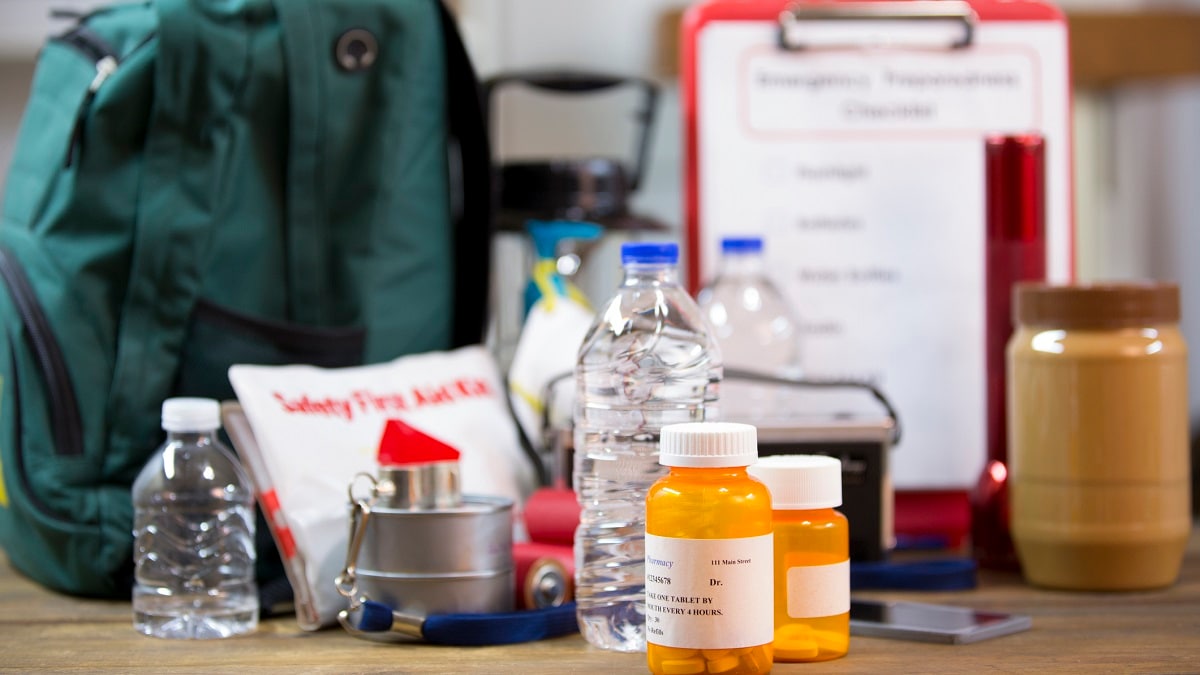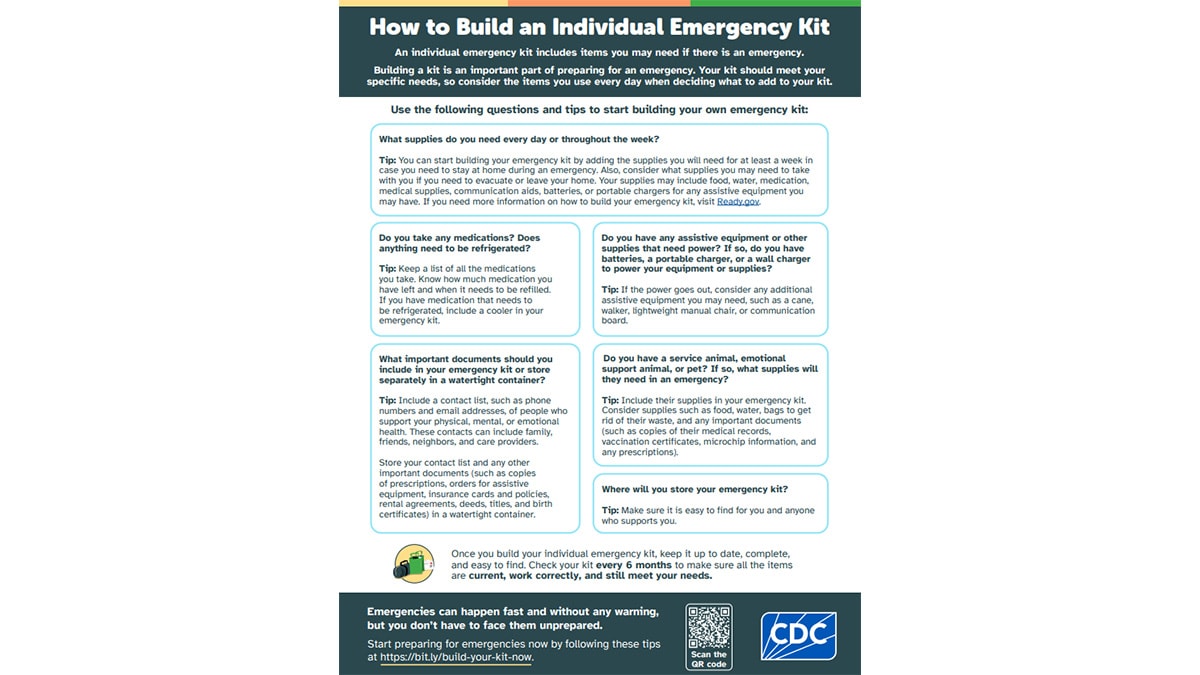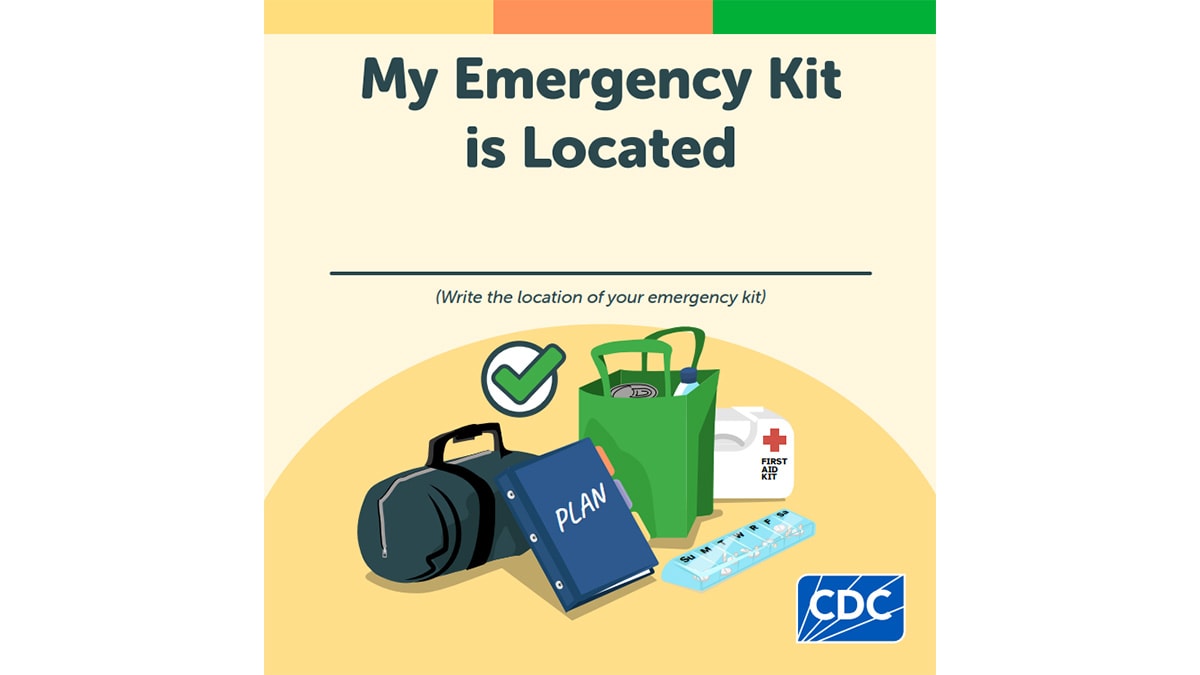What to know
Build an emergency kit that is specific to your individual needs. Read on for helpful tips to consider when building an emergency kit.

Tips to consider
Building an emergency kit is an important part of preparing for an emergency. Make sure your emergency kit addresses your specific needs. Consider the items you use every day when deciding what to add to your kit.
When you build your emergency kit, consider including
- Batteries and portable chargers for adaptive equipment, such as hearing aids.
- Any communication aids you may need.
- At least 1 week's supply of all prescription medications and a cooler for refrigerated medications.
- Medical supplies and important health documents.
- Extra mobility devices, such as a cane or a walker, if you can obtain these additional supplies.
- A contact list (e.g., phone numbers and email addresses of people who support your physical, mental, or emotional health) in a watertight container.
- Supplies for pets and service animals, if needed, including food, water, medicine, toys, and bags to get rid of animal waste.
Once you build your emergency kit, keep it up to date, complete, and easy to find. Check emergency kits every 6 months to make sure all contents are current and functional.
Preparing for an Emergency
Resources
Find a broad compilation of resources on emergency preparedness and response that can be filtered by audience and topic: Resources.



